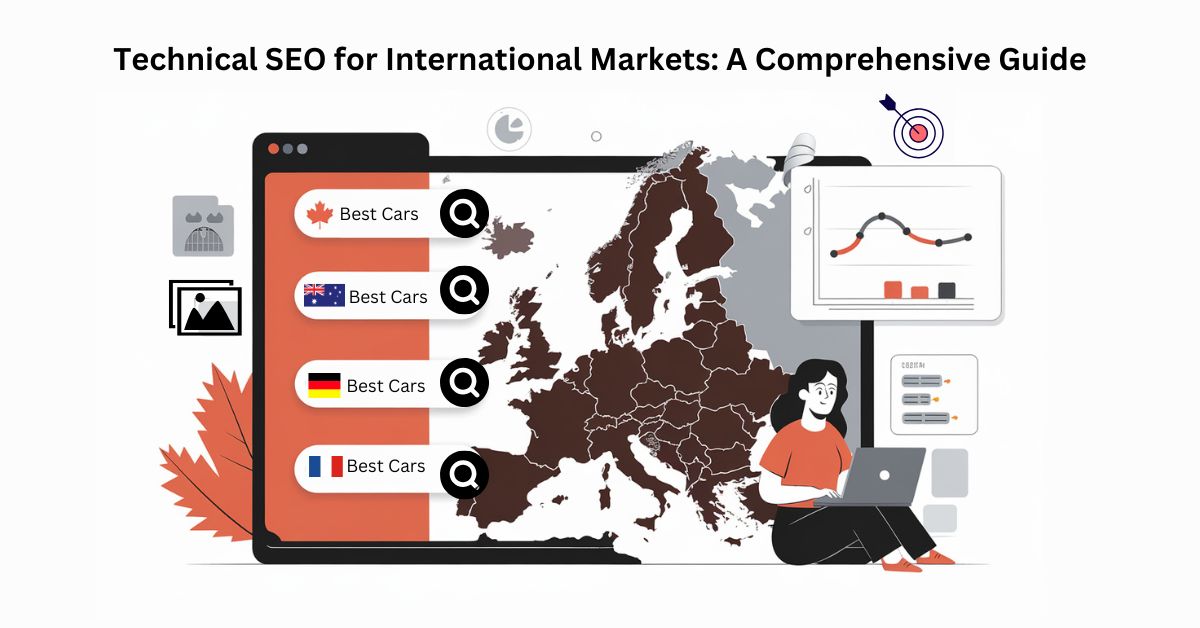Technical SEO for International Markets: A Comprehensive Guide
In an increasingly globalized world, having an online presence is no longer limited by borders. Businesses aiming to expand their reach must now consider the profound impact of technical SEO on international markets. Technical SEO provides the foundation necessary for a website to perform efficiently and effectively on a global scale. It allows for better visibility in search engines, which is essential for engaging diverse audiences across numerous countries. However, optimizing for international markets comes with its own set of challenges and opportunities. From addressing multilingual content to catering to varied cultural expectations, the task requires thoughtful strategy and execution. This guide aims to elucidate the critical elements of technical SEO for international markets, presenting tried and tested strategies to overcome common hurdles and maximize online success.
What is Technical SEO?
Technical SEO refers to the process of optimizing a website so that search engines can easily crawl, interpret, and index web pages effectively. It is an intrinsic part of the overall SEO strategy, ensuring that all technical aspects of a website align with the search engine’s guidelines. Key elements of technical SEO include ensuring proper crawling and indexing of content, maintaining a logical site structure, fast page load times, mobile responsiveness, and secure data transfer via HTTPS. These elements combined ensure a smooth experience not just for search spiders, but also for your users.
Why Technical SEO is Critical for International Markets
As businesses extend their operations to overseas markets, the competition becomes more intense. Each international market comes with distinct user behaviors and expectations that must be met in order to gain traction. Technical SEO serves as a cornerstone for improving search visibility across diverse regions by enabling search engines to accurately serve the correct content to users based on their location and language preference. Proper implementation of technical SEO can significantly enhance a company’s ability to target and convert these new user segments, paving the way for substantial international growth.
Strategies to Enhance Technical SEO Internationally
1. Implementing Hreflang Tags
One of the most critical components of technical SEO for international markets is the use of hreflang tags. These tags help to specify the language and regional targeting of a webpage, allowing search engines to understand which pages should be shown to users in specific geographic areas. Implementing hreflang tags helps prevent duplicate content issues and ensures that users land on the page that best matches their language and region. To implement hreflang tags, you can insert them in the header of your HTML documents, within sitemap files, or via HTTP headers if you’re serving non-HTML files like PDFs. Each method must provide accurate language-region codes matching your target audience.
2. Optimizing Site Structure for Global Audiences
Your website’s structure plays a substantial role in how search engines index your content. For international SEO, having clearly defined structure currency URLs is crucial. Implement URL structures that are consistent across regions—such as using country-code top-level domains (ccTLDs), subdirectories, or subdomains. Utilize XML sitemaps to delineate pages based on their language and target region, and ensure to add self-referencing canonical tags to avoid duplication woes across localized versions of content. Simplified access paths and organized hierarchy not only aid search engines but also elevate user experiences as visitors navigate your site.
3. Enhancing Mobile Responsiveness in Different Regions
With the mobile-first indexing approach adopted by Google, ensuring your website is mobile-optimized is non-negotiable. Mobile usage patterns may differ from one region to another, making it necessary to design adaptable interfaces that cater to such variances. Optimize images, compress files, utilize adaptive design practices, and incorporate structured data to create seamless mobile experiences. Taking these steps helps in retaining user interaction and lowering bounce rates across varied countries, ultimately influencing your search rankings positively.
4. Speed Optimization for Global Reach
Site speed has become a pivotal ranking factor and directly affects user satisfaction. A slow-loading website not only deters visitors but can also result in missed opportunities and lowered rankings. International markets bring about specific challenges such as varied internet speeds and server locations. To address these, leverage global Content Delivery Networks (CDNs) to reduce latency, utilize browser caching, minify CSS/JavaScript, and regularly audit speed using tools like Google PageSpeed Insights and GTmetrix. Implementing these speed optimization techniques ensures a faster, more consistent experience for users globally.
Challenges and Solutions in International Technical SEO
One prominent challenge in international technical SEO is managing multilingual sites efficiently. The differences in language necessitate more intricate keyword research and content creation efforts. An effective solution lies in the adoption of dynamic content serving techniques that automatically serve translations based on user preferences. Another obstacle is effectively accommodating cultural and regional differences in online behavior, which can be mitigated through rigorous market research and content customization. Examples from successful multinational companies illustrate the effectiveness of employing targeted local strategies parallel with their global efforts. Finally, overcoming technical bottlenecks and differences in internet infrastructure in varying countries may require building relationships with local technology partners and constantly refining your technical framework.
In summary, technical SEO plays an instrumental role in catering to international markets. From making subtle adjustments like implementing hreflang tags to more complex challenges such as optimizing site speed for different regions, each step contributes to enhancing a site’s global reach. Attention to detail, constant monitoring, and a willingness to adapt are all part of maintaining a dynamic presence in international SEO. Not only do these strategies improve search visibility, but they also provide a superior experience for users worldwide, driving engagement, conversions, and long-term success in global markets.
We encourage you to start applying these strategies for your website today and share this guide with others who are looking to strengthen their international SEO efforts. For further insights and discussions on SEO strategies, sign up for our newsletter or explore more of our related content to stay ahead in the global market game!







